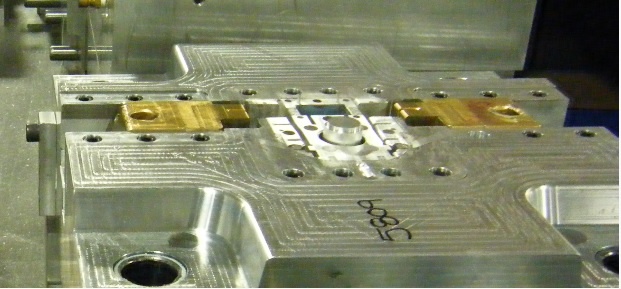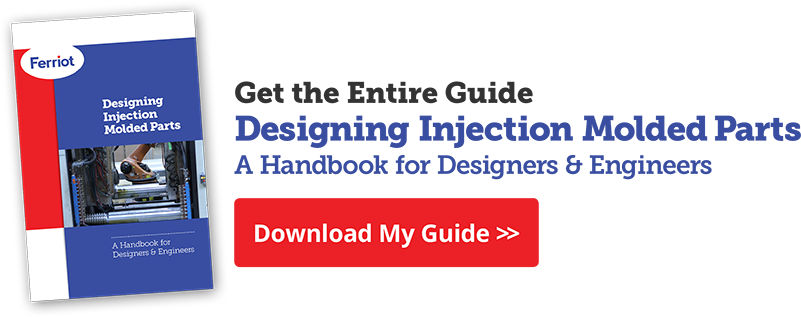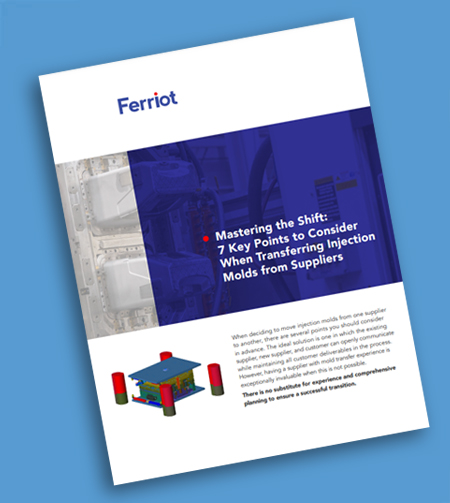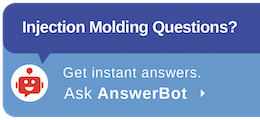We get it: some people are just not “list” people. But when it comes to a successful injection molding project, getting down to as much detail as possible is the best way to ensure a project’s success.
Applications and uses for injection molded parts are numerous  and growing, with increased demand from the medical, automotive, industrial, housewares, electronics and many more industries. As such, more product designers, engineers and Original Equipment Manufacturers (OEMs) are inquiring about switching some parts or entire products to injection molded plastics.
and growing, with increased demand from the medical, automotive, industrial, housewares, electronics and many more industries. As such, more product designers, engineers and Original Equipment Manufacturers (OEMs) are inquiring about switching some parts or entire products to injection molded plastics.
Before meeting with an injection molder to discuss a project, completing a checklist will answer many questions up front, and help the process run smoothly from start to finished product. It may seem basic, but at Ferriot we actually work with customers through a checklist to help accelerate communication and collaboration – and eliminate costly late-stage problems and changes that can happen without clear project scope up front.
Here are a few broad project categories for your Injection Molding checklist, and some key questions that fall under each.
Project Overview
- Project Description: What kind of project is it – i.e. a new part or product, or a redesign or update? What are the desired parts?
- What function will the part serve? Is it a stand-alone product or a piece of a larger assembly? Where will the part be used?
- What market or markets will the product serve? Automotive? Industrial? Medical? Electronics? Housewares?
- What are the project deadlines and milestones?
Design Specifications
- What is the part geometry? Size? Shape? Wall thickness? Temperature requirements? Impact resistance?
- Which injection molding process is required for the part or parts? Traditional injection molding? Structural foam molding? Gas-assisted injection molding? Overmolding?
- What are the strength requirements of the part? How much impact should the part be able to withstand? How much weight or stress must the part be able to withstand?
- What is the recommended resin for the part and its end-use? An engineering grade resin or a commodity resin? PVC or structural foam?
Physical Attributes and Appearance
- What are the aesthetic and brand identity considerations?
- How important is color stability – initial and long term?
- Are any coatings required, i.e. paint, silicone hard coat, film pad printing, etc.
- Must the part or parts be able to withstand chemical and environmental exposure?
- Will the finished product require any fastening or assembly parts?
Project Cost and Delivery
- What is the optimal cost per part that will ensure project profitability?
- Estimated quantities: how many parts will be needed – and by when?
- What is the part’s estimated annual usage and how will it factor into the expected product lifespan?
- What are shipping costs?
- What are costs associated with secondary operations?
We Don’t Mind the Heavy Lifting Up Front
At Ferriot, we appreciate the thought and questions that go into an injection molding project. The more factors to consider, the better: that way all project stakeholders are clear on expectations. In short – don’t be afraid to make that list!
Of course, the above questions are a sampling of common issues and questions to arise in most injection molding projects. To read more items that should be on your checklist and learn how to optimize the injection molded parts development process, download our free guideline, “Designing Injection Molded Parts: A Handbook for Designers & Engineers.” Or, if you prefer, call us at (330) 786-3000 for immediate attention.




